Culture / Tokyo
Electric dreams
Japanese digital art collective TeamLab is seizing the aesthetic possibilities of technology to remaster what it means to both create and experience artworks. We took a stroll among the flowers in their brave new world.
Imagine a museum where you can touch every artwork and where images are constantly moving, changing and migrating from room to room, never exactly the same as when you first stood in front of them. A place where you might find yourself strolling through what appears to be a rice field but which, in an instant, turns into a rushing stream. Somewhere you can stand in a room and be surrounded on all sides by a relentlessly churning ocean; where animals move along the walls and flowers carpet the floors.
This is not a fantasy. All this is possible courtesy of TeamLab, a remarkable company based in Tokyo that is creating beautiful and immersive digital artworks and exhibiting them to adoring crowds. By the end of the year more than one million people will have seen Mori Building Digital Art Museum: TeamLab Borderless, their stunning space that opened in 2018 in a 10,000 sq m box in the Tokyo waterfront district of Odaiba.
TeamLab was founded in 2001 by Toshiyuki Inoko, 41, after he finished his undergraduate studies in physics and mathematical engineering at Tokyo University. He joined up with four friends to explore where maths, art and technology might meet. “Ever since I was a child I was interested in creating art using science,” he says. “But basically I wanted to hang out with my friends.”
Inoko quickly realised that his art projects didn’t make for a sustainable business model so TeamLab started designing websites and applications, work that is still a core part of the business. But the art never went away and the roots of Borderless can be found in works that date back to those early years (“Flowers are Crimson” from 2005, in particular). The opportunity to turn digital art into a viable business finally came in 2011 when Takashi Murakami – one of the biggest figures in contemporary art – came across TeamLab’s work and offered them an exhibition space at his Kaikai Kiki Gallery in Taipei.
When Japanese developer Mori Building – which runs its own contemporary-art museum – heard that TeamLab wanted to build the first fully digital art museum, it rushed in. The firm offered to finance the project, as well as providing the space in Odaiba close to where venues are being built for the Tokyo Olympics. “We’re using art and culture to make Tokyo a better place,” says Ou Sugiyama from Mori Building, which runs operations at the museum. TeamLab has also created a “body-immersive” project in Tokyo called Planets, backed by media company dmm. Visitors to this smaller, semi-permanent space wade through milky waters filled with uncannily real digital carp or lie in a darkened room as giant flowers appear to float overhead. Another exhibition is currently illuminating a 400-year-old castle in Kochi, western Japan, and TeamLab created the inaugural exhibition for the new Amos Rex museum in Helsinki. Borderless has prompted calls for exhibitions elsewhere; in 2019, TeamLab’s work will be on display in locations around the globe.
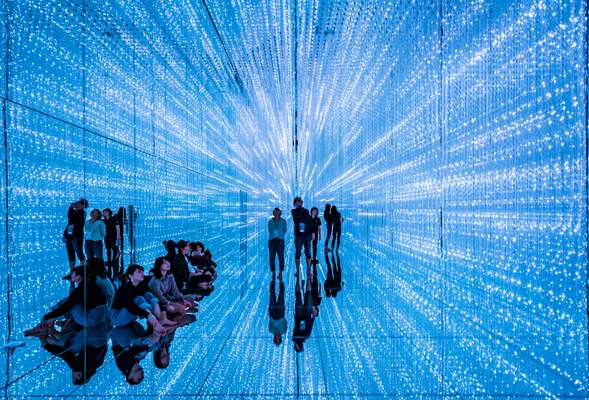

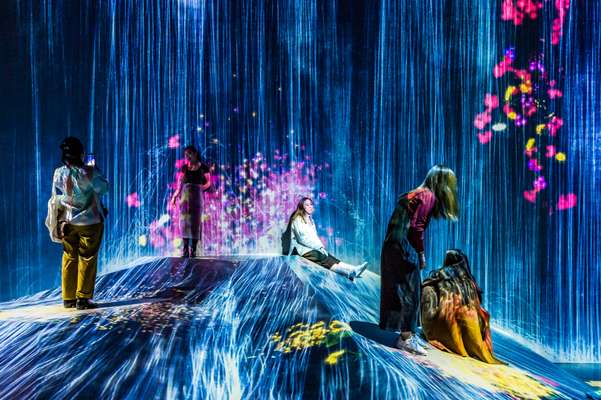
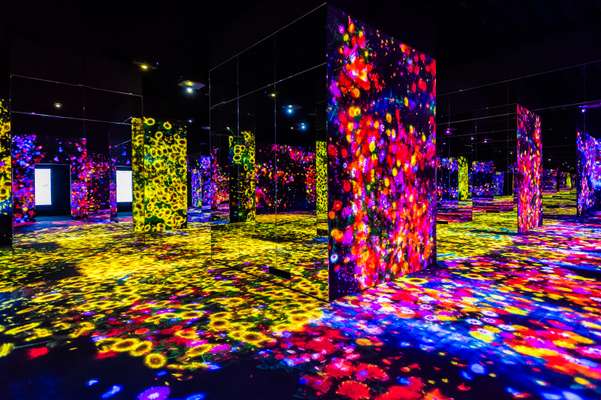
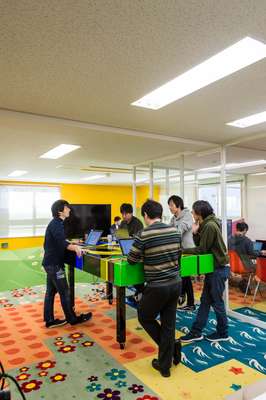
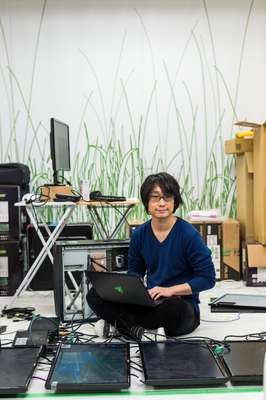
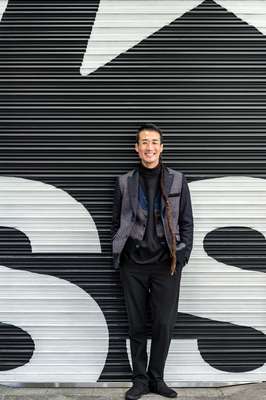
There is growing interest in TeamLab’s work from collectors too. In 2014, Pace Gallery, based in New York, started representing them. Last May a TeamLab digital work called “Ever Blossoming Life – Gold” sold at Christie’s for $225,000 (€200,000). It’s a beguiling piece that looks like a traditional Japanese screen-painting but is in fact a moving image that changes as the painted flowers grow, bloom, fade and die. The work’s nature presents an interesting conundrum for the art world since, like so much of TeamLab’s work, the image is never the same twice. It is created by a computer in real time; when the flowers die, the computer starts another cycle but the results will never be exactly the same.
Inoko, who has the brains of a science boffin and the look of an off-duty popstar, seems so focused on the work that he appears not to give too much thought to the mechanics of his company and even less to the machinations of the art market. The team has grown enormously in the past year (nobody can give a precise figure but it has somewhere in the region of 600 people in Tokyo), while retaining a flat corporate structure that eschews the usual rules of hierarchy and promotion. But rather than paint himself as a beacon of progressive employment practices, Inoko – munching voraciously on a Wendy’s burger – says honestly, “I just don’t really think about it.”
Yet Inoko is a thinker: someone who can pause for two minutes while pondering the answer to a question. His medium is images, not words, and the concepts for TeamLab’s work start with him. When he does express his thoughts you feel that you are being offered the tiniest portion of what is actually going on in his mind. When he tries to explain why he creates art, he swiftly moves onto philosophy. The mission is complex and vast, from understanding the world and the meaning of beauty to pulling people out of their smartphone-filtered worlds and into a shared public space that requires their physical presence. You get the sense that it’s almost too trying to explain. Which is why Inoko has people like Takashi Kudo, another university friend and a loquacious, eloquent advocate of TeamLab’s aims. Talk to him for half an hour and you begin to think TeamLab might have found the answer to world peace.
“We believe we can use digital art to change the relationship between humans and the world around them and the relationship between people,” he says. “In cities we can feel negative about people but here you can create and share a single moment of beauty with others that can’t be repeated. It has the potential to make you feel more positive about the people around you.” Where traditional art is a one-way conversation between a static piece and a viewer, in TeamLab’s digital art the presence and touch of a human can change the whole work.
Nothing can quite prepare you for the discombobulating thrill of dipping into TeamLab’s world. Even if the technology is beyond the reach of the average civilian, the results are mind-blowing. In one room, “The Forest of Resonating Lamps”, Venetian-glass lamps shine brighter when someone stands close, setting off a chain reaction with lights around them. Stamp on a creature and it will die, as in real life; elsewhere, children watch in awe as their aquatic drawings are scanned and instantly float across the walls. Music, much of it composed by Hideaki Takahashi, adds to the mystique, while generative sounds of thunderclaps and rain resonate when people touch a work. It is a world of algorithms, a contained disorder, which means that no two visits are alike.
In one of the most intriguing rooms, a ghostly orchestra of traditional musicians appears to play as an ensemble, although there is no score and the music is never the same. Visitors gasp, holding phones aloft as they try to capture the scene before them. Even those in the business have expressed their bafflement. “If I didn’t work at TeamLab I would wonder how on earth it was done too,” says Hidekazu Fukunaga, one of the software engineers who spent two years working on Borderless.
At its core, Borderless is a nerve centre of 520 computers (and 470 projectors), each of which needs to be tweaked and updated. TeamLab – always authored collectively – considers Borderless a single work of art but the space contains more than 60 different artworks, each one the product of endless programming, testing and retesting. Nature provides essential source material. “When you look at nature there are so many independent elements that are interconnected and yet you can’t see the borders between them. That’s what we wanted to recreate; each work is autonomous and yet they all intermingle and co-exist.”
Adam Booth, a British artist and art director with a phd in Japanese Nihonga painting, has worked at TeamLab for 10 years. He needs to be both a master with a brush and a whizz with a computer and he sees no conflict between the two. “With technology people can participate in art in a way that has never been possible before – you’re not only part of the work, you can interact with it and change it.” He also points out the importance of teamwork. “Everybody brings their own skills to a project: engineers, designers, programmers. Nobody could do this on their own. It’s like a contemporary atelier.”
Borderless is rooted in technology but it is not the deadening kind that leaves users emotionally isolated and physically feeble; this is tech with emotion that encourages physicality and appeals to children and adults. It changes the way we think about the digital world and brings visible joy to people who see it. Inoko seems baffled. “I honestly don’t know why it does,” he says, laughing. “I’d love to know.” Can technology keep up with his ideas? “Yes – that’s like asking a painter if his acrylic paints are good enough to express what he wants to say. It’s up to us to keep working with whatever is available.”
Borderless gets Instagrammed wildly; musicians seem particularly drawn to it (Kendrick Lamar, Sam Smith and The Weeknd have all posted their own visits). But as everyone will tell you, no photo can do it justice. In an age when people can live vicariously through the social-media adventures of others, Borderless is a reminder that there is no substitute for real life. It is, as its creators intended, something you can only really experience for yourself.


